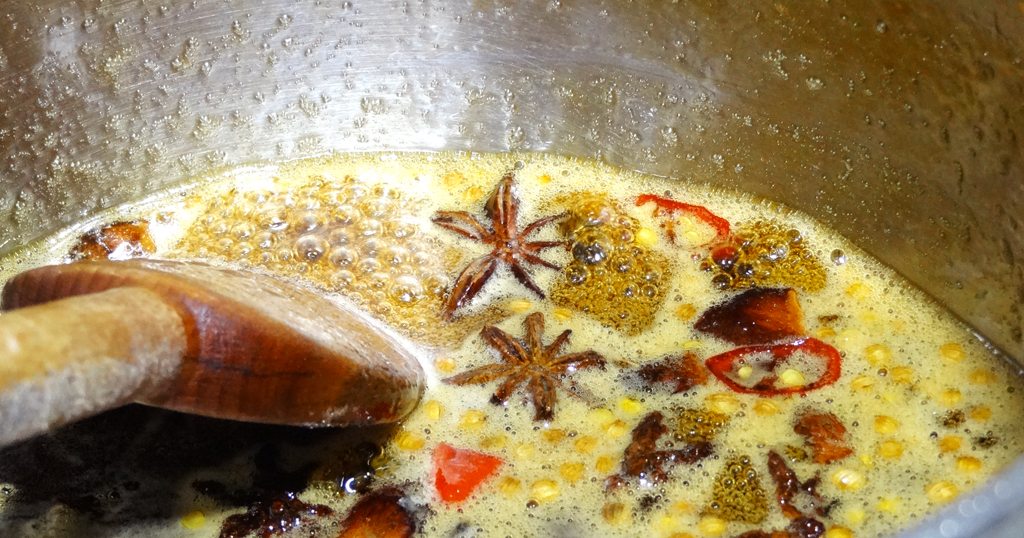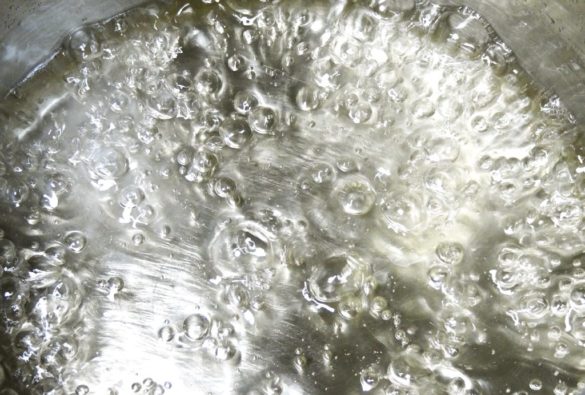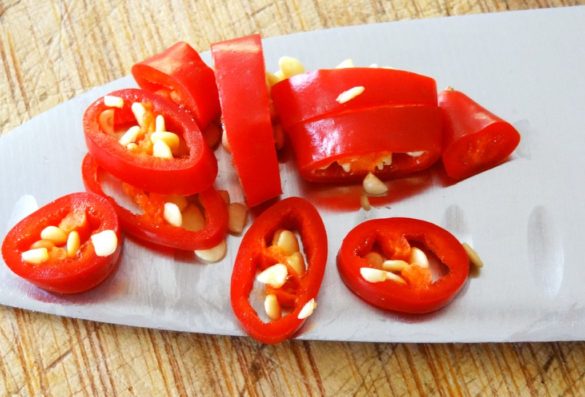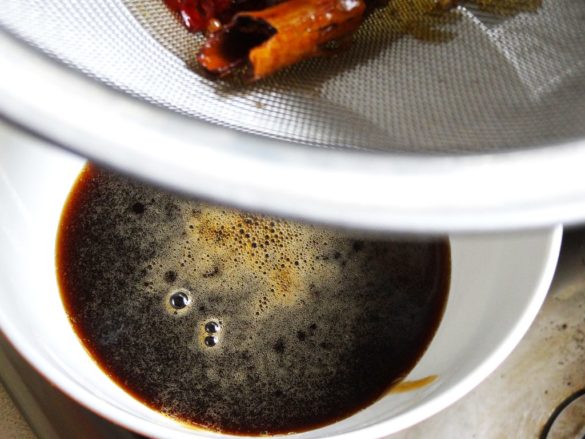Introduction:
As a prelude to a dish that I will post in the next few days I have recently shared recipes for nước chấm and Chinese master stock. The final of these basics is a salty chilli caramel which throws the taste buds into frenzy; saltiness from fish and soy sauces, intense caramel sweetness from refined sugar, and a spicy prod from a heat stick named chilli. Add to this the sticky texture and it makes a great saucy coating, for pork in particular.
The key element of getting the consistency and taste of this sauce spot on is the caramelisation of the sugar. Sugar is an incredible substance especially when it is heated. It transforms from a sweet odourless compound into something that is richly aromatic containing acidic and bitter notes. The bitterness develops more as the temperature of the sugar increases, to a point where it becomes acrid, burnt and inedible. It’s important therefore to catch the caramel at the precise point required.
Traditionally there are two ways to produce a caramel: the wet method which involves mixing sugar with water and then heating, and the dry method where the sugar is heated on its own. There a couple of advantages when using the wet method: firstly, as it takes longer to caramelise there tends to be a greater development of flavour, and secondly the presence of water means that you can cook the caramel on a higher heat (than for dry) from the onset without the risk of burning the sugar. The dry method requires more attention but it is a quicker method to caramelise sugar.
This recipe uses the wet method. For it we require a straw coloured caramel, the colour of which will start to appear at about 165 deg C (330 deg F). The precision of temperature is not vital here, unlike when doing sugar-work at lower temperatures. I therefore just use my old mince pies (eyes) to tell when it is done.
A word of note to folks that are inexperienced using heated sugar – just go careful as the temperatures are far hotter than boiled water, and caramelised sugar will create a nasty burn or two if it comes in contact with your skin (I still have the scars). I read recently that Heston Blumenthal suggests that you visualise your cooking and techniques before performing them. In this way you can have everything ready in preparation. For example when the caramel hits the straw colour ensure that you have your other ingredients at hand, as it is amazing how quickly caramel can burn if you turn your back.
The fun really happens when you add the liquid (fish and soy sauces) to the caramel as it creates a boiling effervescence that rises sharply in the pan. For this reason when creating this sauce it is necessary to use a large enough pan so that the effervescence does not over-flow.
The addition of chilli, star anise, coriander seed and cinnamon give a great South-east Asian character to this sauce of which I am sure you will think is just irresistibility.






